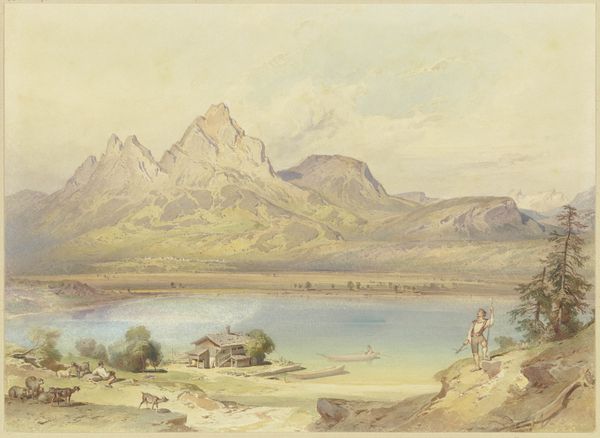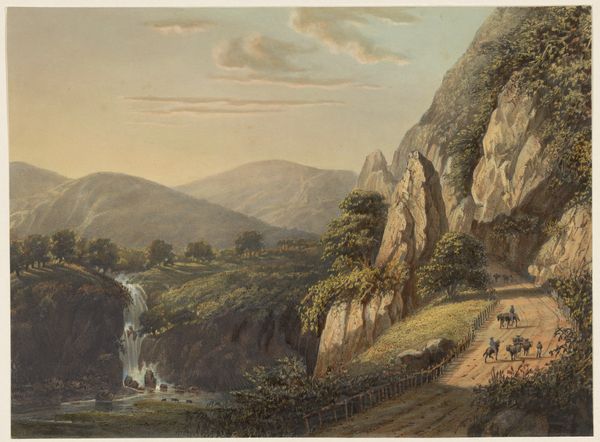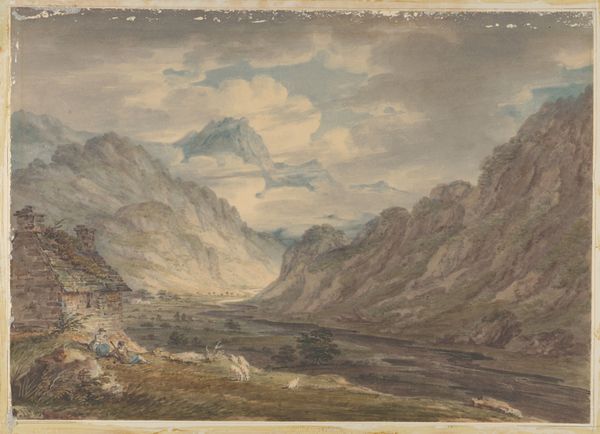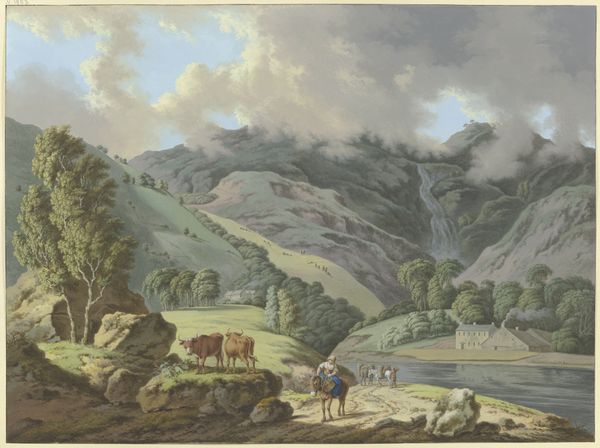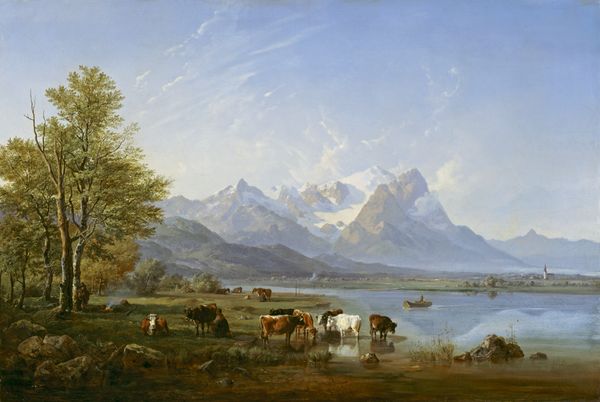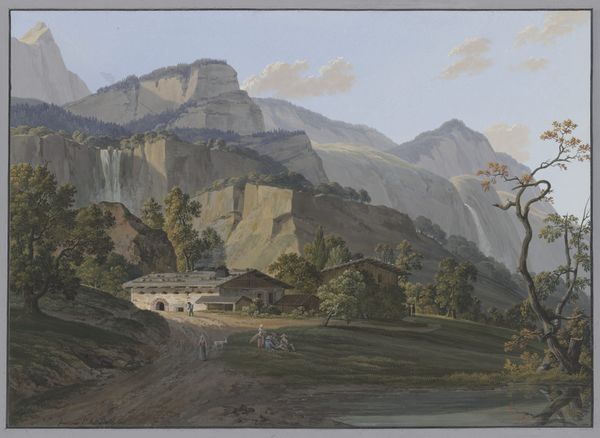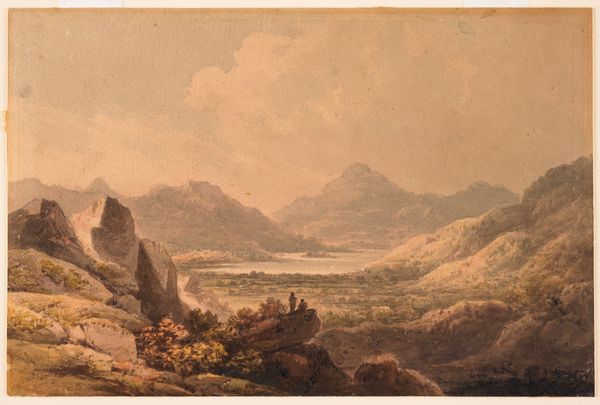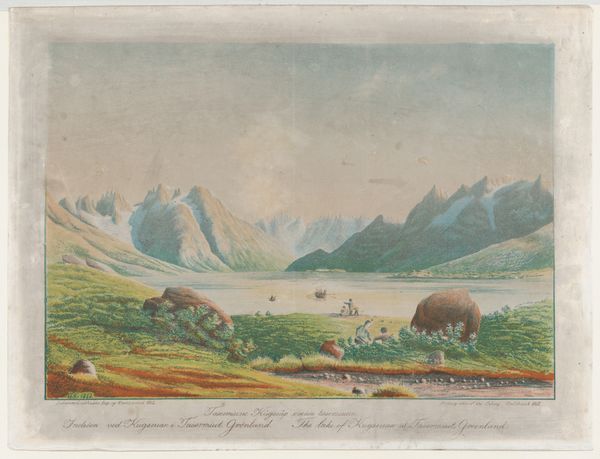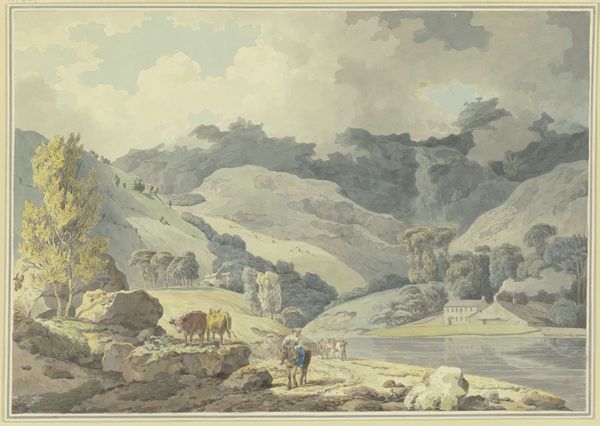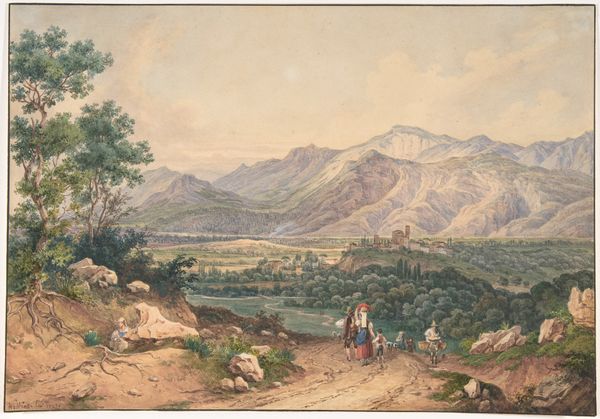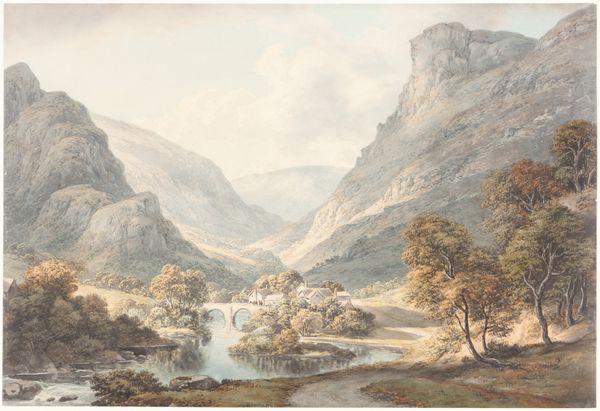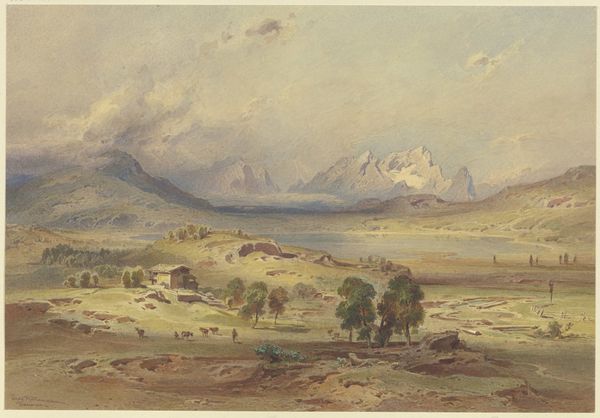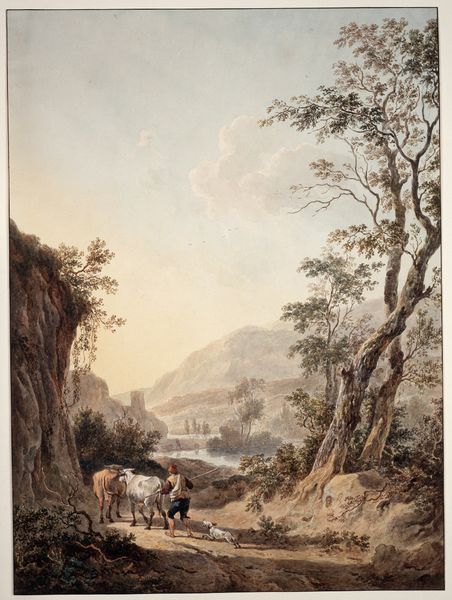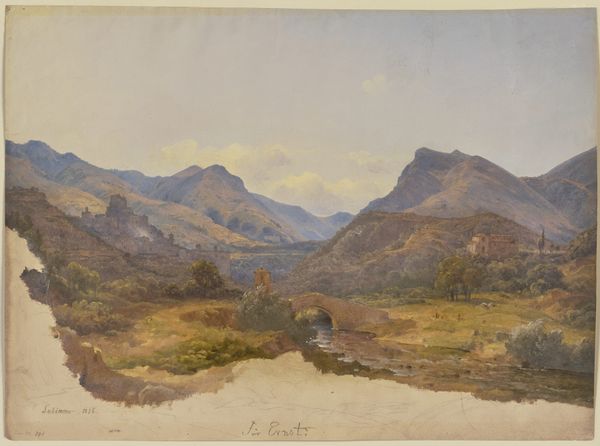
drawing, tempera, print, etching, watercolor
#
drawing
#
tempera
# print
#
etching
#
landscape
#
oil painting
#
watercolor
#
hudson-river-school
#
watercolor
Dimensions: Mount: 30 x 40 in. (76.2 x 101.6 cm) Sheet: 19 9/16 x 29 3/4 in. (49.7 x 75.6 cm) Image: 16 3/4 x 27 1/2 in. (42.5 x 69.9 cm) Framed: 34 × 44 in. (86.4 × 111.8 cm)
Copyright: Public Domain
Editor: So, this is "The Rocky Mountains, Lander's Peak" created in 1866, it appears to be a print with watercolor, tempera, and etching by James Smillie after the original oil painting by Albert Bierstadt, and housed here at the Met. The vastness is quite striking. What underlying commentary do you think this imagery suggests? Curator: That vastness, I think, is precisely where the power and the problematic nature of this work resides. The Hudson River School, of which Bierstadt was a key figure, was deeply intertwined with the concept of Manifest Destiny. How do you see that playing out here? Editor: Well, you've got the grandeur of the American West idealized through dramatic landscape, but that visual dominance seems to negate the presence and perspective of Indigenous communities also depicted within the scene. Curator: Exactly! The encampment is almost picturesque, easily digestible for an Eastern audience. This image served as a form of visual propaganda. What impact do you think that had, showing a seemingly "peaceful" co-existence in an already romanticized depiction? Editor: I hadn't considered the way that idealization essentially masked the violence and displacement happening in reality. It's a dangerous visual narrative. So how can we approach appreciating the artistic skill, while critically engaging with its problematic implications? Curator: By acknowledging that art doesn't exist in a vacuum. We must always interrogate the power structures at play in both its creation and reception. Even its visual strategies speak volumes. What are the most prominent details or points of focus for you? Editor: Probably the meeting of this untouched frontier and the quiet inclusion of Native Americans - it's pretty misleading. I had initially perceived it as a pretty landscape, nothing more! Curator: And that initial reaction is valid, but critical engagement demands we delve deeper into the complex interplay of aesthetics, history, and politics. This is how we start thinking about art as a mirror, reflecting back both beauty and the difficult truths of our society. Editor: Thanks, seeing it with fresh eyes makes all the difference. Curator: The pleasure is mine; hopefully others viewing it now will begin to have a sense of that larger story too.
Comments
No comments
Be the first to comment and join the conversation on the ultimate creative platform.
